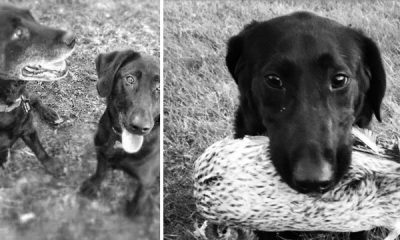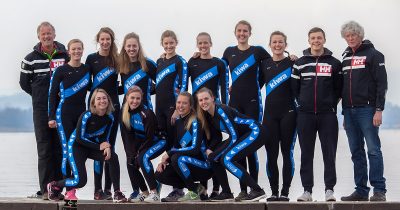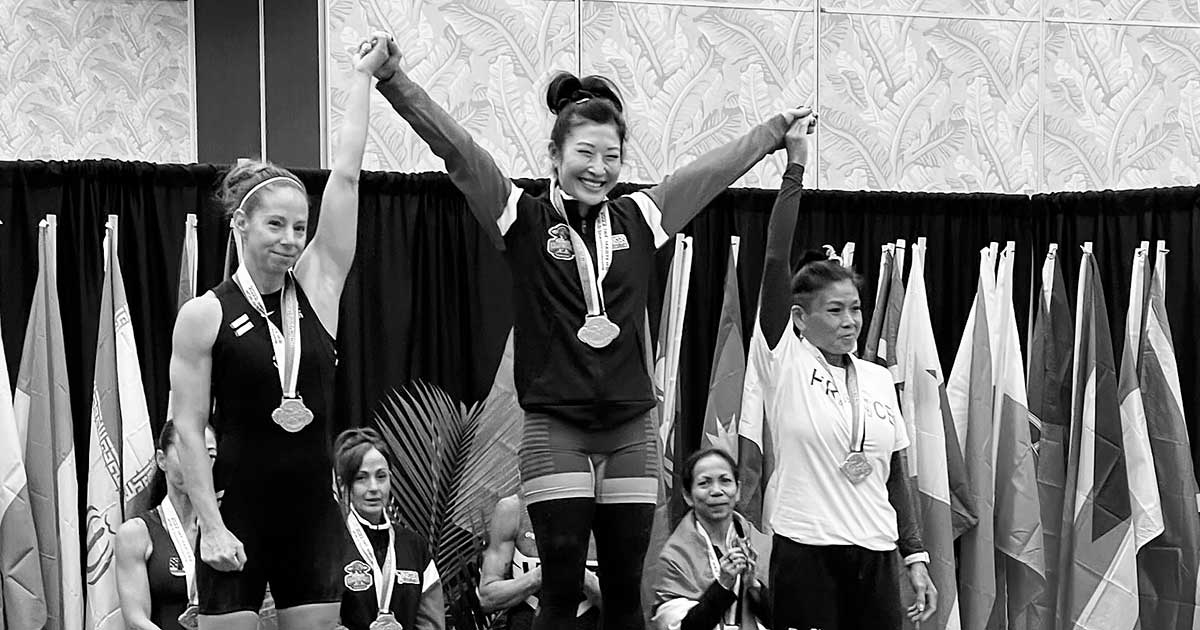
What if I told you I could let you in on a little secret to keep you cool as a cucumber at a test event or competition? If you are a human being, I am sure you have, at some point, been nervous or maybe even hyperventilated at an event where you knew everyone was watching. Here is the story of how I won the IWF Masters World Weightlifting Championships by controlling my breath.
Introduction
On December 3rd, 2022, the ballroom where the International Weightlifting Federation World Masters Weightlifting Championships was being held was full to capacity with athletes, coaches, volunteers, and spectators.
For those who have never been to a weightlifting meet before, let me set the scene. There is a back room with warm-up platforms for each athlete. Then there is one main elevated stage platform where the athlete will make their competition attempts. Each athlete is allowed three attempts at the snatch, which is one continuous movement from ground to overhead. And three attempts at the clean & jerk, which is first a clean, a movement from the ground to the rack position, followed by a jerk, a movement from the rack to overhead, resulting in an extended locked-out position.
Each lifter is grouped into a flight of athletes by their entry total. Mine was the highest total so I knew I would be following myself for all six of my lifts (three in snatch and three in clean & jerk). I also knew that I needed a total to secure the gold, which oddly enough made it more nerve-racking. I normally like being in an underdog position and trying to win out of sheer tenacity and some luck.
The Competition
The snatch is the first lift at a weightlifting meet. After my competitors finished, 54kg was loaded onto the bar and my name was called. Although I made the lift, I was given two red lights for an elbow press out. I didn’t want to risk another missed attempt, so my coach and I decided to take that weight again. When an athlete follows her or himself, they are given two minutes to rest between attempts. The load of 54kg was called again and this time I did not leave room for doubt whether my elbows were locked out or not. I received three white lights. Although this lift secured the snatch gold for me, I still had one more attempt. We decided 56kg was a smart call because I only had two minutes to rest and did not have time to warm up for a higher weight on the competition platform. The bar was loaded with 56kg and I finished by making two out of three lifts in the snatch taking the gold.
The next lift is the clean & jerk. With ten-minute breaks between lifts, I had to wait about 45 minutes for my competitors to finish. This meant I needed to calm down, rest, and then work back up to a heavy lift to prepare for my clean & jerk. This is where controlling my breath came in (more on that later).
We decided to play it safe and do what was needed to win the clean & jerk gold and total gold. I opened with 69kg, committed to the lift, and made it with ease. This secured the gold. Having completed my job, any weight over 69kg in the next two attempts would be fun.
As I had been working towards the world record, we decided to make 72kg as my second attempt. This was a number I had completed in training many times, so I felt confident in its execution. As expected, it was a solid lift. Crowds gathered for my last attempt of the clean & jerk, and it felt like everyone was on the edge of their seats. The bar was loaded with 74kg, which was 1kg over the current world record. I managed to clean it well but when I went to jerk it, I could feel myself just a hair out front and lost it. I was disappointed at the time but very proud of my effort and I knew I would come back to break that record one day.
The Body’s Response to the Pressure of Competition
The refereeing is quite intense during these events. To determine a good lift, referees look for motionless ownership, control of the weight, and full lockout of the extremities. The pressure to get the weight above your head is not enough, it must also be technically proficient. Some might say it is a lot of weight in the physical and proverbial sense. One might ask how best to handle and overcome the nerves or added energy that comes from being in a moment where execution is key and every kilo counts. It can be overwhelming to know that you have trained an entire year for this one day and six attempts.
The most successful way I have been able to train the so-called nerves and enhance physical performance is with breathing techniques and protocols from the Second Wind seminar. Breath is a powerful tool that is often overlooked and ignored. However, no part of the human body has as much direct control over the outcome of heart rate, mental aspects, and physiological capabilities as breath. For decades Russian athletes and special forces have been employing various breathing techniques to enhance performance, especially key when someone’s life depends on it. In turn, these breathing techniques also apply to elite athletes trying to improve performance outcomes.
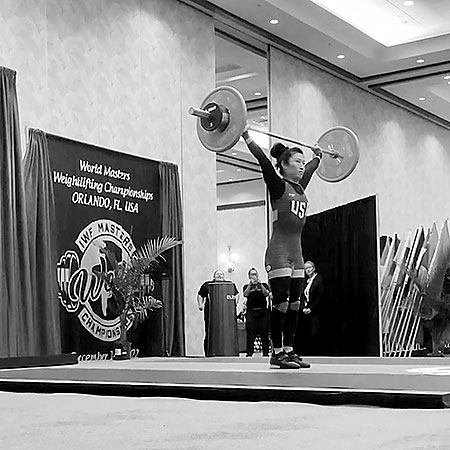
In high-risk or high-stakes situations the heart rate will naturally increase as will anxiety and potentially a state of hypoxia. There are two broad outcomes to these extreme stimuli. In Second Wind, Pavel describes these outcomes and the body’s physical response:
- The first is hypertrophic, which involves high central nervous system (CNS) excitability and low activity of inhibition systems.
- The second is hyperkinetic. In this state there is inefficient circulation and heart rate activity, as well as increased metabolism at rest and during exercise. There is also an increased concentration of metabolites and adrenaline in the blood, a low resistance to stress, and a low tolerance to hypoxia. There is also decreased immune resistance and increased incidence of disease and injuries.
- The third is relaxation (a balance of excitation and inhibition in the CNS). This involves the speed of muscle relaxation, medium muscular strength, excellent movement coordination, and an excellent reaction to moving objects. It also involves efficient heart activity, efficient metabolism, a reduced concentration of metabolites in the blood, and a high rate of recovery. In relaxation, the body has an excellent work capacity, high resistance to stress, a lower risk of injury, significantly better tolerance to physical and psychological loads, and greater athletic longevity.
It should be clear which response an athlete would favor just before and after lifting in a competition: relaxation. This state of relaxation is called “second wind.”
“Second Wind is a manifestation of the relaxation mechanism of acute mobilization against extreme stimuli (RMAD)”—Vysochin, 1986
Only at the time of executing competition lifts would an athlete want to switch gears and get excited.
Controlling Breath During a Competition
1. Warmup and Mobilizing
- Mobilizing breath: inhale on a 1-2-3 count and exhale on a count of 1.
2. Competition Lift Warmup
Below is the protocol I use during the competition lift warmup before the snatch and clean & jerk. This is the loading phase.
- 1+3 inhalations and 1+3 exhalations:
- A slow deep inhalation followed by a three-second pause while maximally relaxing the muscles of the rib cage (do not exhale).
- Three more consecutive inhalations with a three-second pause after each followed by a deep exhalation.
- A three-second pause while maximally relaxing the muscles of the rib cage (do not inhale).
- Finally, three more consecutive forceful exhalations, using the abdominal muscles with a one second pause after each.
- A slow deep inhalation followed by a three-second pause while maximally relaxing the muscles of the rib cage (do not exhale).
- Three more consecutive inhalations with a three-second pause after each followed by a deep exhalation.
- A three-second pause while maximally relaxing the muscles of the rib cage (do not inhale).
- Finally, three more consecutive forceful exhalations, using the abdominal muscles with a one second pause after each.
3. Calming the Nervous System
Once the snatch portion of the event is complete, I employ the protocol below to calm my nervous system down before starting the ramp-up for the clean & jerk portion of the competition. And then use it again after the clean & jerk.
- A calming breath inhaling on a count of 1 and exhaling on a of count 1-2-3.
- Diaphragmatic breathing with feedback (touch a wall with the stomach).
- Yogic breathing.
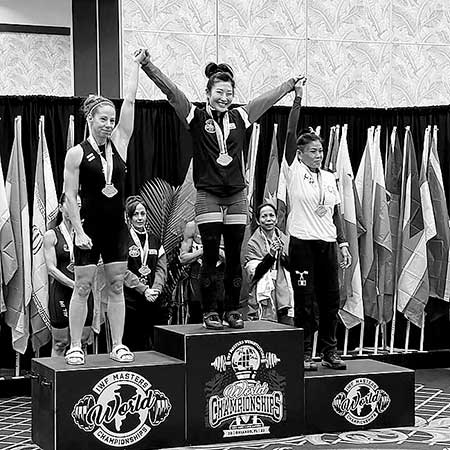
Conclusion
Even as I write this article and relive the events of that day, I feel my heart racing and breathing becoming static. Knowing that these breathing strategies calm me down and prepare me for competitive events of any kind, helps me rest assured I will always succeed no matter the outcome.
Thank you for taking the time to read my story.
Your 2022 Masters World Weightlifting Champion of the fifty-year-old/55kg weight class on behalf of the United States of America and StrongFirst Certified Senior Instructor, Mira Kwon Gracia.

